Related Research Articles
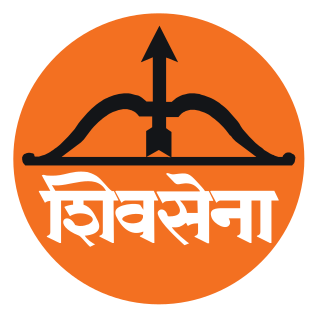
Shiv Sena is a right-wing Marathi regionalist and Hindu nationalist political party in India founded in 1966 by Bal Thackeray. Shiv Sena's election symbol is the Bow and Arrow. It uses the saffron colour in its flag and a image of a roaring tiger.

Bal Gangadhar Tilak, endeared as Lokmanya, was an Indian nationalist, teacher, and an independence activist. He was one third of the Lal Bal Pal triumvirate. Tilak was the first leader of the Indian independence movement. The British colonial authorities called him "The father of the Indian unrest". He was also conferred with the title of "Lokmanya", which means "accepted by the people as their leader". Mahatma Gandhi called him "The Maker of Modern India".
The Maratha caste is composed of 96 Marathi clans originally formed in the earlier centuries from the amalgamation of families from the peasant (Kunbi), shepherd (Dhangar), pastoral (Gavli), blacksmith (Lohar), carpenter (Sutar), Bhandari, Thakar and Koli castes in Maharashtra. Many of them took to military service in the 16th century for the Deccan sultanates or the Mughals. Later in the 17th and 18th centuries, they served in the armies of the Maratha Empire, founded by Shivaji, a Maratha Kunbi by caste. Many Marathas were granted hereditary fiefs by the Sultanates, and Mughals for their service.

The Konkan, also Concan or Kokan, is a stretch of land by the western coast of India, running from Damaon in the north to Anjediva in the south; with the Arabian Sea to the west and the Deccan plateau in the east. The hinterland east of the coast has numerous river valleys and riverine islands among the hilly slopes leading up into the tablelands of the Deccan. The region has been recognised by name, since at least the time of Strabo in the third century C.E., and was a thriving mercantile port with Arab tradesmen from the 10th century. The best-known islands of Konkan are Ilhas de Goa, the site of the Goa state's capital at Panjim, and the seven islands of Bombay, on which lies the capital of the state of Maharashtra. The main parts of Konkan start from Alibag and end with Goa.

Pathare Prabhu is one of the Hindu communities in the city of Mumbai.

Bhalchandra Trimbak Ranadive, popularly known as BTR, was an Indian communist politician and trade union leader.
Saraswat Brahmins are Hindu Brahmins, who are spread over widely separated regions spanning from Kashmir in North India to Konkan in West India to Kanara and Kerala in South India. The word Saraswat is derived from the Rigvedic Sarasvati River. Most of Sarswat Brahmins are on Rajasthan north side, Haryana south side and most places on Punjab, Himachal and Jammu and Kashmir

The East Indians, also called East Indian Catholics or Bombay East Indians, are an ethno-religious Indian Christian community native to the Seven Islands of Bombay and the neighbouring Mumbai Metropolitan Area of the Konkan division.
Chandraseniya Kayastha Prabhu (CKP) is a caste mainly found in Maharashtra. Historically, they made equally good warriors, statesmen as well as writers. They held the posts such as Deshpande and Gadkari according to the historian, B.R. Sunthankar, produced some of the best warriors in Maharashtrian History.
The Marathi people or Marathis are an Indo-Aryan ethnolinguistic group who are indigenous to Maharashtra in western India. They natively speak Marathi, an Indo-Aryan language. Maharashtra was formed as a Marathi-speaking state of India in 1960, as part of a nationwide linguistic reorganization of the Indian states. The term "Maratha" is generally used by historians to refer to all Marathi-speaking peoples, irrespective of their caste; however, now it may refer to a Maharashtrian caste known as the Maratha.
Mangalorean Catholics are an ethno-religious community of Latin Catholics in India typically residing in the Diocese of Mangalore in the erstwhile South Canara area, by the southwestern coast of present-day Karnataka.
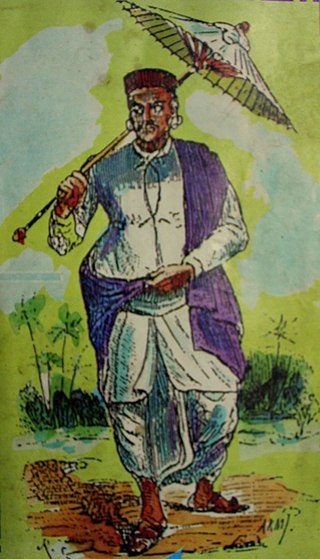
The Daivadnyas,, are a Konkani Gold-smith community, who claim to have descended from Vishwakarma, Hindu architect god and part of larger Vishwakarma community. They are native to the Konkan and are mainly found in the states of Goa and Damaon, Canara, coastal Maharashtra, and Kerala.
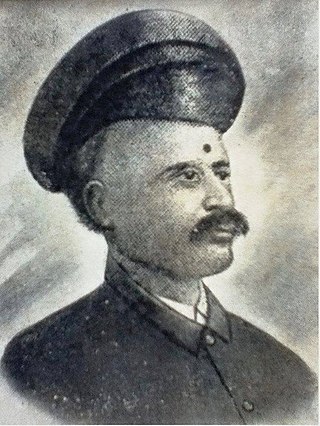
Shivkar Bāpuji Talpade was an Indian instructor in the Sir JJ School of Art with an interest in Sanskrit and in aviation. He lived in Mumbai, and is claimed to have constructed and flown an unmanned, heavier-than-air aircraft in 1895. Contemporary accounts of a successful flight do not exist, and no reliable historical records document its existence.
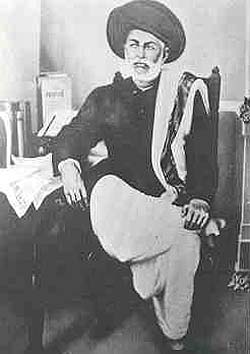
Satyashodhak Samaj was a social reform society founded by Jyotiba Phule in Pune, Maharashtra, on 24 September 1873. The society endeavoured to mitigate the distress and sufferings of Dalits and women. It espoused a mission of education and increased social rights and political access for underprivileged groups, focused especially on women, peasants, and Dalits, in Maharashtra. Jyotirao's wife Savitribai was the head of women's section of the society. The Samaj disbanded during the 1930s as leaders left to join the Indian National Congress party.
Roman Catholic Brahmin is a caste among the Goan, Bombay East Indian and Mangalorean Catholics who are patrilineal descendants of Konkani Brahmin converts to the Latin Catholic Church, in parts of the Konkan region that were annexed into the Portuguese East Indies, with the capital (metropole) at Velha Goa, while Bombay was the largest territory (province). They retain some of the ethno-social values and customs of their ancestors, and most of them exhibit a noticeable hybrid Latino-Concanic culture. They were known as the Brahmins among the "New Christians".

Maharashtra is the third largest state of India in terms of land area and second largest in terms of population in India. It has a long history of Marathi saints of Varakari religious movement, such as Dnyaneshwar, Namdev, Chokhamela, Eknath and Tukaram which forms the one of bases of the culture of Maharashtra or Marathi culture. Maharashtra had huge influence over India under the 17th-century king Chatrapati Shivaji Maharaj of the Maratha Empire and his concept of Hindavi Swarajya which translates to self-rule of people.

Keshav Sitaram Thackeray, was an Indian social reformer. He campaigned against superstitions, untouchability, child marriage and dowry. He was also a prolific author.
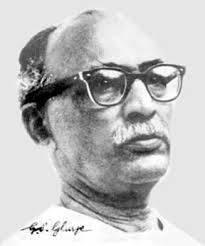
Govind Sadashiv Ghurye was a pioneering Indian academic who was a professor of sociology. In 1924, he became the second person to head the Department of Sociology at the University of Bombay. And, is widely regarded as the founder of Indian Sociology & Sociology in India.
Panchkalshi is a Hindu community. They are one of the original native communities of Bombay (Mumbai) metropolitan area in the Konkan division of India. Since the 19th century the community has called itself Somvanshi Kshatriya .
The Prabhu communities are a group of related Hindu castes found in Maharashtra, India. There are four such castes, all having different ritual and social status within the caste system of Maharashtra. They are Chandraseniya Kayastha Prabhu, Pathare Prabhu, Kanchole Prabhus and the Danved Prabhu.
References
- 1 2 3 4 5 6 7 8 9 Pratap Velkar. Pathare Prabhuncha Itihas. Shree Vidhya Prakashan, Pune 1997
- 1 2 3 Narain D; University of Bombay. Dept. of Sociology; Indian Council of Social Science Research (1989). Research in Sociology: Abstracts of M.A. and Ph. D. Dissertations Completed in the Department of Sociology, University of Bombay. Concept Publishing Company. pp. 122–. ISBN 978-81-7022-235-4 . Retrieved 9 March 2013.